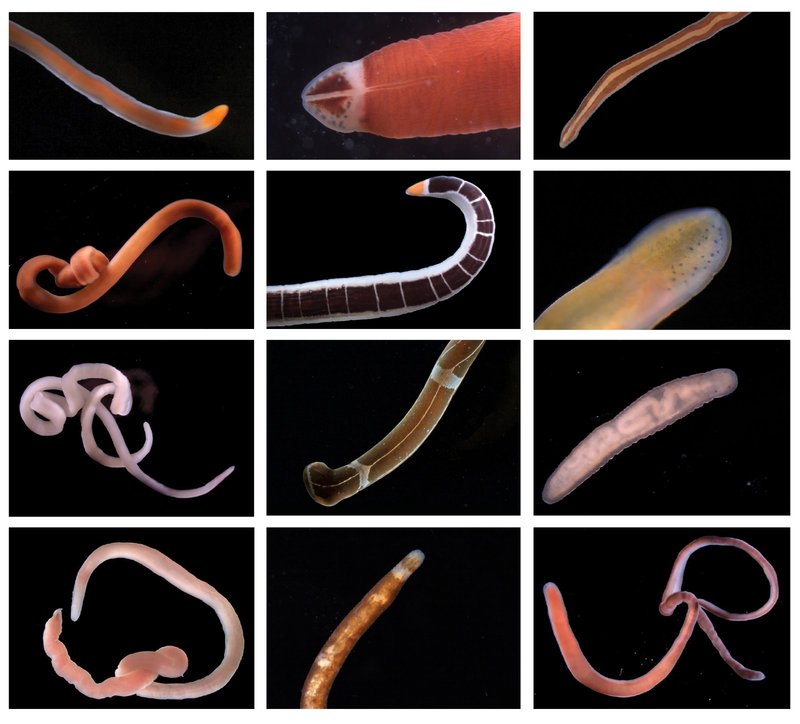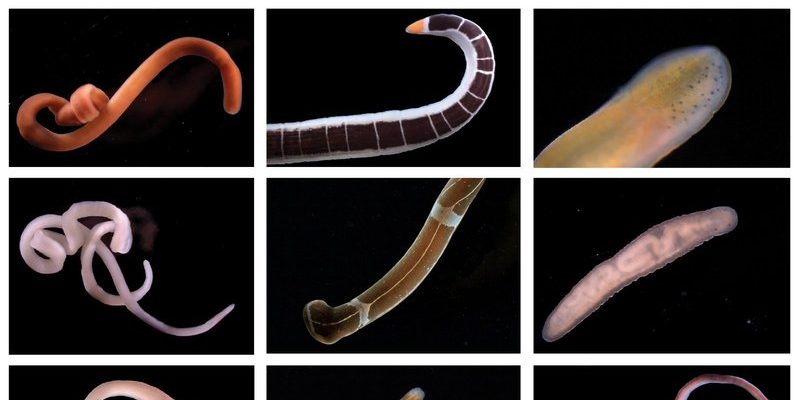
Let’s dive into the intriguing world of ribbon worms and explore the different predators they face. From fish and birds to other marine animals, these predators play a key role in the ribbon worm’s ecosystem. This isn’t just a casual stroll in the park; rather, it’s a closer look at how theseunderwater battles shape the lives of ribbon worms. So, grab your snorkel gear—metaphorically speaking—and let’s see who’s on the menu!
What Are Ribbon Worms?
Ribbon worms, scientifically known as Nemertea, are a group of soft-bodied, elongated creatures that can live in various marine environments. They can range from just a few centimeters to over 30 meters long, depending on the species. Think of them as the ocean’s spaghetti: long, flexible, and often found in tangled masses.
These worms have fascinating adaptations, including a unique proboscis that they use to catch prey. This means they’re not just passive dwellers; they actively hunt for food, such as small crustaceans and larvae. Their color patterns can vary, often allowing them to blend into their surroundings, making them less visible to potential threats.
You might be wondering how a seemingly simple creature has so many complexities. Well, ribbon worms are vital to the ocean’s ecosystem as both predators and prey. Their existence helps maintain the balance in the marine food chain, which, in turn, has implications for larger species, including those that prey on them.
Common Predators of Ribbon Worms
Ribbon worms have their own set of natural predators, which can be quite unexpected. Here are some of the most common ones that keep the population of ribbon worms in check:
- Fish: Many types of predatory fish, like flatfish and eels, are known to feast on ribbon worms. Their keen sense of smell and ability to detect movements make them adept hunters.
- Birds: Various seabirds, particularly those that forage along the shoreline, include ribbon worms in their diet. They can spot these slithering creatures from above, swooping down to grab them.
- Carnivorous Marine Invertebrates: Creatures like crabs and sea stars are not to be underestimated. They scavenge the seafloor and can easily snatch a ribbon worm when it’s out in the open.
- Other Worms: Some predatory worms have developed a taste for ribbon worms. It’s a bit of a cruel twist, but in nature, there are no rules!
Understanding these predators helps highlight how ribbon worms must navigate their environment with caution. Each predator has its own hunting strategies and adaptations, which adds to the survival challenges faced by these delicate creatures.
How Fish Hunt Ribbon Worms
When it comes to hunting down ribbon worms, fish have a few tricks up their fins. Predatory fish like quite a variety of options at their disposal. For instance, flatfish, often found lying flat on the seafloor, can lie in wait for unsuspecting ribbon worms to pass by before snapping them up in a blink.
You might be curious about how a flatfish can spot a worm buried in the sand. Well, these fish have excellent vision and can detect even the slightest movements in their surroundings. Pair this with their ability to camouflage themselves, and you have a recipe for a successful hunt.
Another fish that is known to snack on ribbon worms is the eel. Eels are agile swimmers and often hunt in crevices or among rocks, where ribbon worms like to hide. Their long, slender bodies allow them to reach into tight spaces where ribbon worms might be hiding, making it tough for the worms to evade them.
The Role of Birds in Ribbon Worm Predation
Seabirds are an important part of the predatory landscape for ribbon worms. These birds are not just charming creatures; they are skilled hunters too. From gulls to shorebirds, many species have developed techniques to snatch ribbon worms from the wet sand or tidepools.
When hunting, birds often use their keen eyesight to spot movement. Once they notice a ribbon worm, they swoop down rapidly, using their beaks to grab their meal. It’s a swift and efficient process, illustrating the constant cat-and-mouse game between predator and prey.
You might also wonder how ribbon worms defend against these feathered foes. Their first line of defense is their natural coloration, which helps them blend into their surroundings. However, if that fails, their ability to burrow quickly into the sand can sometimes save them from being captured. Still, it’s a tough life—always on high alert.
Carnivorous Marine Invertebrates: A Hidden Threat
While fish and birds are obvious predators, let’s not overlook the role of carnivorous marine invertebrates. Crabs, for instance, are opportunistic feeders and often scavenge for anything that catches their eye—including ribbon worms.
Crabs have strong pincers that can easily grab and hold onto their prey. They often forage along the ocean floor, making them a significant threat to ribbon worms that venture too close to the surface. Their scavenging nature means that even a small, exposed ribbon worm can end up as a quick meal if it’s not careful.
Sea stars, with their unique tube feet, also play a role in the predation of ribbon worms. They can slowly move across the seafloor, searching for prey. When they find a ribbon worm, they can use their incredible suction to pull it out from its hiding place. It’s a bit like an underwater game of tug-of-war!
Other Worms: A Beautifully Unforgiving Reality
In nature, it’s often a case of “survival of the fittest,” and for ribbon worms, this can mean competition from other worm species. Some predatory worms, which share similar habitats, have developed tastes for ribbon worms.
These competitive relationships can be particularly tough. While ribbon worms can hunt smaller creatures, they also have to be wary of becoming a meal themselves. Predatory worms use a range of techniques to capture their prey, including extending their bodies and ensnaring their target.
Interestingly, the presence of these predatory worms can help keep the ribbon worm population balanced. This predator-prey relationship highlights the complexity of marine ecosystems and reminds us that every creature has a role to play.
In the aquatic world, every creature, from the smallest crab to the largest fish, plays a vital role in their ecosystem. For ribbon worms, their natural predators are critical players in maintaining the balance of marine life. While they may seem delicate and unassuming, these worms are an integral part of the food web.
By understanding the various threats faced by ribbon worms, we can appreciate the rich tapestry of life in our oceans. The dance between predator and prey is not just about survival; it’s about maintaining the delicate balance that supports all life below the waves. So, the next time you see a tide pool or explore a beach, take a moment to think about the hidden relationships in that ecosystem, including the ribbon worms and their fascinating world of natural predators.

